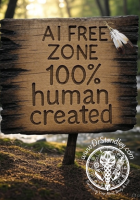
|
|
|

|
|
314.420.5099 [Question Line] [back to Health Topics main page] /
[back to "A" main page] A B C D E F G H I J K L M N O P Q R S T U V W X Y Z
Acrodynia is pain in the extremities (the hands and feet). It is an infantile disease that is characterized by lesions of the skin on the hands and feet, swelling in the extremities, digestive disturbances, and itching of the hands and feet, along with the cheeks and tip of the nose that are intensely pink. Now a rare disease, acrodynia (painful extremities) primarily affects young children. The symptoms of irritability, photophobia (sensitivity to light), pink discoloration of the hands and feet, and polyneuritis (inflammation involving 2 or more nerves) can be attributed to chronic exposure to mercury. Acrodynia is frequently followed by arthritis involving multiple joints and muscular weaknesses. HISTORY: Children initially become listless, drowsy, and irritable, with a tendency to cry. Anorexia (loss of appetite) and subsequent weight loss can occur. More than 50% of patients demonstrate photophobia (sensitivity to light). Hypotonia (loss of muscle tone), the ability to hyperextend or overextend the limbs, and atrophy (wasting) of muscles are noted. The child may refuse to walk. FREQUENCY: In the U.S., Acrodynia was once widely prevalent; however, it is rare today because of the discontinued use of mercury in different preparations. Internationally, Acrodynia was especially common in Australia.ALSO KNOWN AS: Chronic heavy metal poisoning, chronic mercury poisoning, dermatopolyneuritis, erythredema polyneuritis, Feer disease, Feer's disease, heavy metal poisoning, heavy metal toxicity, mercury poisoning, mercury toxicity, Pink disease, Swift syndrome, Swift's disease, Swift disease, Swift-Feer disease, vegetative neurosis, ETIOLOGY: An allergic reaction to mercury.
PATHOPHYSIOLOGY: The most frequent sources of mercury prior to the legislated removal of the heavy metal from these preparations were calomel-containing anthelminthics, laxatives, diaper rinses, teething powders, fungicides in paint, repeated gamma-globulin injections, termite-protected wood (mercury bichloride), watch batteries (ie, via ingestion), and mercurial antibacterial ointments. This legislation corresponded to the virtual disappearance of acrodynia. Present-day cases reveal more novel exposure, such as mercuric oxide used to treat eyelid mites. Some have suggested the disease may represent a delayed allergic or hypersensitivity reaction because not all persons exposed to mercurial compounds develop the disease. Because the metal can be stored in the body to some extent and intolerance may develop long after exposure, morbid symptoms may appear weeks or months after the drug administration (ie, exposure), with its cause escaping recognition. The deleterious effects of relatively small doses of mercury on the nervous system that are sometimes seen in the course of acrodynia add to the acrodynic reaction. In acrodynia, no reflex dilatation of the peripheral vessels occurs in response to heat. Vasoconstriction is abolished only when the nerve supply to the arterioles is interrupted. PHYSICAL MANIFESTATIONS: The initial symptoms are followed by the numerous cutaneous manifestations in 2 - 4 weeks. The skin changes are characteristic. Early in the course of the disease, the tip of the nose, fingers, and toes acquire a pinkish color, which subsequently develops into a reticulate erythema (redness) of deeper hue. The hands and feet become painful, cold, cyanotic (bluish-gray), erythematous (redness), and swollen. Erythema (redness) is usually blotchy but may be diffuse. Hemorrhagic puncta (points) are also seen. On the trunk, the erythema (redness) is blotchy and may be macular (not elevated yet discolored area) or papular (elevated and discolored area). Extreme pain and pruritus (itching) in the extremity often leads to lichenified (thickened and hardened), excoriated (abrasions) changes as the child constantly rubs and scratches his or her skin. Patients may assume the "salaam position" in which they sit with their heads between their legs and rub their hands together. Inflammation, swelling and gum erosion can been seen with subsequent loss of teeth. These changes are early. A notable symptom is massive hyperhidrosis (excessive sweating for the temperature of the environment) with a mouselike smell, which may lead rapidly to miliaria rubra (prickly heat). This can easily turn to bacterial secondary infection with a tendency for ulcerating pyoderma (pus from skin). Persistent hypertension, tachycardia, susceptibility to bronchitis, dyspepsia, precipitant micturition, salivation, and hypotonia can be observed. Usually, the patient develops a moderate upper respiratory tract infection with a sore throat. Alopecia (hair loss) has also been noted. Nail loss is also noted.
/
[back to "A" main page]
[go to Supplements main page]
DISCLAIMER: **This web site's goal is to provide you with information that may be useful in attaining optimal health. Nothing in it is meant as a prescription or as medical advice. You should check with your physician before implementing any changes in your exercise or lifestyle habits, especially if you have physical problems or are taking medications of any kind. |
| 314.420.5099 |
| Questions regarding this site: webmaster@drstandley.com |
| Copyright 1999-2025: Dr. Loretta J. Standley - All Rights Reserved. |














































